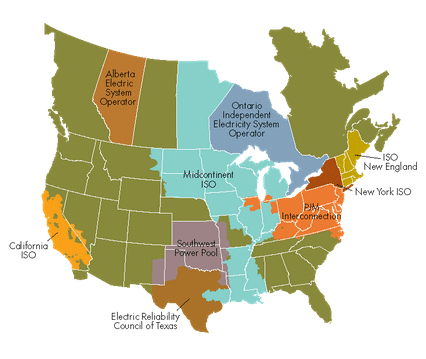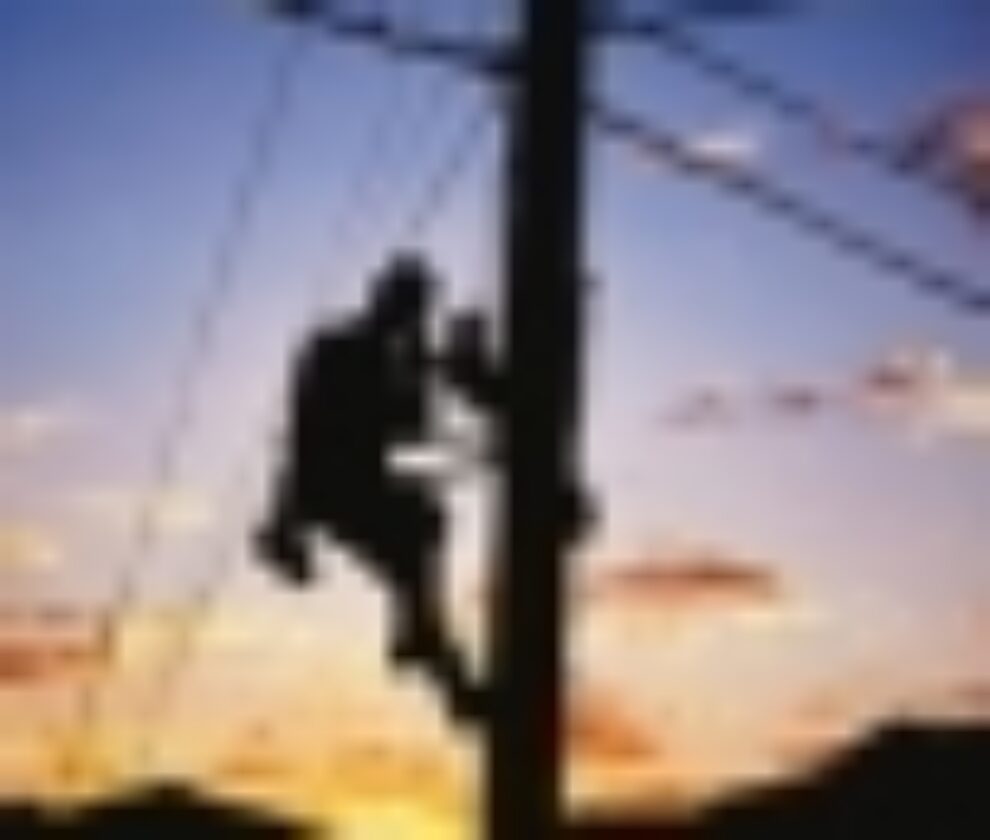What is a Clean Energy Grid?
A “Clean Energy Grid” is a modern high-voltage network of transmission lines offering critical infrastructure for the United States as we strive toward common goals of energy security, electricity reliability, climate protection, and robust and sustainable economic growth. The range of benefits from such lines is a broad one. Using existing and proven technologies, we can and should, within a few decades, transform our functional but aging electric system into a “Clean Energy Grid” that is:
Delivering 80%-plus Renewable Energy
Climate scientists overwhelmingly agree that avoiding catastrophic climate change impacts will require reducing global greenhouse had emissions by 80% or more before 2050. To achieve that goal, renewable resources will have to meet at least 80% of our electric generation needs, since emission reductions from other sectors of the economy may prove more difficult and costly. The good news is that numerous recent studies show that a reliable grid powered by 80-100% renewable energy is technically and economically feasible using current technologies. Additionally, moving towards a high-renewables energy mix will also create jobs and spur innovation. Leading analyses predict that both distributed generation and centralized utility-scale renewable resources will have to be scaled up rapidly and play complementary roles to reach such high levels of renewable energy generation.
A Clean Energy Grid contributes to emissions reduction by providing at least 80% renewable generation.
Connected, Integrated, and Coordinated
America’s power grid—largely a relic of efforts to electrify the country over a century ago—still lacks key elements to complete the network of generation assets and customers load throughout three broad geographic systems, namely high-voltage lines to unlock remote renewable resources and connect isolated balancing areas. Traditional access to low-cost resources, specific-user cost allocation, and local and traditional utility autonomy and regulatory jurisdiction are factors that discourage acceptance of regional opportunities, especially those that imply regional or national decision-making. The Federal Energy Regulatory Commission adopted Order 1000 explicitly to foster better transmission planning within regions and coordination between regions. Order 1000 will succeed if regions recognize the enormous economic, clean energy, and reliability benefits of building the most critical remaining transmission links and sharing their costs, as some regions have already started to do. Recent actions in the West to integrate separate balancing authorities using an energy imbalance market (EIM) are a good sign that the nation is moving towards an integrated grid that maximizes benefits for all.
A Clean Energy Grid accesses remote renewable resources, links balancing areas, and enables efficient markets and systems.
Market-Driven
Although most consumers do benefit from some form of competitive electricity markets, significant portions of the country (shown in green on the map below) are served by traditional regulated monopoly utilities which own and control the generation, transmission, and distribution of electricity in their service territories and are reluctant to expose themselves economically to the new realities of renewable generation. Yet the emergence and growth of energy markets – and the presence of renewable energy in the markets – across North America has delivered tremendous benefits to electricity consumers: lower prices, greater reliability, and more efficient and cleaner generation. Even at today’s relatively low levels of penetration, a growing body of analysis (PJM, MISO, and Ohio) suggests that renewable resources – with plummeting capital costs and zero fuel costs – are pushing electricity prices down, accelerating the retirement of outdated, inefficient, and dirty generation, and reducing emissions. As the cost of greenhouse-gas pollution is increasingly factored into investment decisions, America’s virtually unlimited renewable resources have the potential to put additional economic pressure on traditional generating resources. Although it is a challenging task, opening all regions of the country to fair and competitive markets will dramatically accelerate the deployment of clean and renewable resources while offering the best economics for electric service to customers.
A Clean Energy Grid leverages the power of markets and the competitive advantages of clean energy to drive the economic, reliability and climate benefits to both producers and consumers.
 Reliable and Resilient
Reliable and Resilient
The North American grid remains one of the greatest engineering achievements of all time, but decades of under-investment in transmission and distribution systems have left the grid increasingly vulnerable to disruptions and outages, prompting the American Society of Civil Engineers to grade it D+. With proper planning and investment, we can build a Clean Energy Grid that meets ever more demanding reliability and power quality needs, is resistant to cyber-attacks, and can withstand more frequent and intense weather events expected to be driven by climate change. In the wake of Superstorm Sandy, New York City and Consolidated Edison are investing billions of dollars to strengthen their infrastructure and improve operations.
A Clean Energy Grid is one with minimal outages and rapid response.
Smart and Responsive
Our electric grid is overwhelmingly built on technology more than half a century old, and the use of modern information technology on the system is in its infancy. A huge array of technologies likely to be deployed in the next few decades at all levels of the system promise to deliver quantum leaps in efficiency while also easing the transition from traditional and inflexible baseload power plants to a larger and more diverse, distributed and dynamic mix of resources. At the high voltage level, synchrophasors, automated dynamic line ratings, and advanced re-conductoring technologies will allow operators to optimize the performance of every transmission line. At the distribution and customer level, advanced metering, automated building controls, remotely-dispatched appliances, Volt/VAR optimization, and distributed energy generation and storage will reduce and shorten outages while delivering choice and value to consumers. Indeed, some key benefits smart grid capabilities already offer include:
- Net benefits over $89 per customer per year
- 55-592 lbs fewer carbon emissions per customer per year
- Average 27.2 minutes of avoided outages per customer per year, a 25% increase in reliability.
A Clean Energy Grid applies modern information technology at all levels of the system to dramatically and cost effectively improve performance and reduce environmental impacts.
Politically Achievable
In achieving a Clean Energy Grid, however, we will need to find consensus solutions to acknowledged problems: the facts that high-voltage transmission is expensive, intrusive, and unattractive, with benefits that are difficult to attribute to specific beneficiaries. We cannot get to a clean energy economy without transmitting more clean energy, and the only technology available is transmission by wire, but the costs, the land-use, environmental, and aesthetic impacts, and the misalignment of regional grids with state regulatory jurisdiction require new understandings, agreements, and broader public participation in this difficult and relatively underemphasized area of energy policy.
A Clean Energy Grid requires an open-minded recognition that its benefits dramatically outweigh its costs, as well as the willingness to adopt national and state policies that recovers those real costs in an equitable manner.
What are the Key Issues?
Low Cost Power
Families and businesses around the country could lower their monthly electric bills if we invest in modernizing and expanding our transmission infrastructure. With no fuel costs, renewable energy sources like wind are often the cheapest power available in the market, but they need a robust grid to deliver these resources to market. In some regions of the country, like the Midwest and Texas, wind energy is already displacing electricity generated by coal- and gas-fired power plants as the cheapest form of generation. Transmission accounts for 7% of the typical electric bill, while generation makes up about 68% of the same bill. It doesn’t take a Ph.D. in economics to see that investing a little in transmission to save a lot on generation is a good deal for consumers.
Investing in the transmission grid also reduces congestion, which costs consumers billions of dollars each year – almost $2 billion in the PJM region alone.
Clean Energy Transmission
From the winds of the Great Plains to the desert sun of the Southwest, our nation has vast potential to create clean, cheap, renewable power to mitigate climate change, revitalize our economy, and strengthen our national security. In order to tap this great resource, we must expand and upgrade our high-voltage electric power transmission system to enable massive domestic renewable energy resources currently stranded in our country’s remote areas to be developed and delivered to population centers.
Cost Allocation
Just as local electric ratepayers currently fund local electricity infrastructure investments, broad-based groups of ratepayers should cover the costs of grid investments that provide broad-based benefits. This will ensure all beneficiaries of the transmission grid support the cost of its development. Cost allocation policies should be as simple as possible (e.g., allocating designated costs proportionately to all load in the interconnection) to avoid lengthy regulatory proceedings and provide greater predictability for developers and ratepayers. Clear cost allocation policies will provide transmission developers and investors with the certainty they need to move projects forward.
Planning
New transmission infrastructure lives a long life on paper before ever becoming a reality. Transmission developers must show that a line is needed and would serve the best interests of all affected stakeholders. An interconnection-wide, comprehensive approach that considers a wide variety of factors but that puts a priority of grid safety, reliability, and maximizing clean energy will ensure that future transmission investments serve our needs for decades to come. Further, planning processes should appropriately value the long-term benefits of new transmission assets, to ensure that the appropriate infrastructure is built to serve our national needs and goals for decades to come.
Siting
Once the need for a power line has been amply proven, an exact pathway must be chosen. This can be a long and slow process within one jurisdiction, but it gets much longer and slower if the power line will cross borders and jurisdictions. Efforts are underway to regionalize planning to streamline and simplify the planning process, and care must be taken to ensure a broad spectrum of stakeholders have input in those processes.


